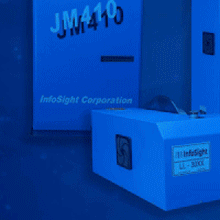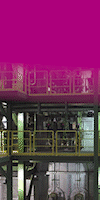Report: Better Times on the Horizon for Steelmakers Who Survive 2013
02/05/2013 - The latest global steel report from Ernst & Young says excess steelmaking capacity globally will remain the biggest issue for the sector this year. It also questions the assumption that vertical integration in the sector adds value.
Steelmakers will need to focus on restoring and maintaining value to survive 2013 and position for growth in the future, according to a new Ernst & Young report, Global steel: A new world, a new strategy.
The annual report released in January says excess steelmaking capacity globally will remain the biggest issue for the sector this year — but the operating environment should improve from 2014.
Mike Elliott, Ernst & Young’s Global Mining & Metals leader, says steelmakers will need to focus on strategic cost reductions and assess optimal capital structure. The report also questions the assumption that vertical integration in the sector adds value.
“The big challenge for steelmakers in 2013 is how to be cost competitive while maintaining enterprise value,” Elliott says.
Despite increased demand for steel and the removal of some older steelmaking capacity in 2012, the level of excess capacity is greater now than it was 12 months ago, due to the continued growth in new steelmaking facilities.
Capacity utilization rates in the sector remain below 80%, rising to more sustainable levels from 2014.
“Global steel demand is unlikely to improve sufficiently in 2013 to exceed the committed new capacity. This, combined with ongoing volatility in raw materials costs will challenge the sustainability of high cost producers,” says Elliott.
“However, the continued closure of older, higher-cost steelmaking plants – and an increase in the rate of growth in demand – should lead to improved profitability for the sector in 2014 and 2015.”
Elliott warns the “wild card” that could jeopardize the reduction in excess capacity was the potential for political initiatives seeking to protect jobs, which could delay the closure of older, higher-cost steelmaking plants.
“The propping up of zombie mills will only damage the global steel sector.”
Is there value in vertical integration?
In recent years, many steelmakers have integrated raw material mines into their supply chains, believing they would protect value by removing volatility in the cost of raw materials. However new Ernst & Young analysis suggests that it may not always improve enterprise value.
“The conventional wisdom is that overall enterprise value is improved with a vertically integrated business, but our analysis shows this isn’t necessarily the case for every business,” says Elliott.
“Steelmakers should critically assess the value of vertical integration to their business and whether separation is more valuable. They should consider alternatives to managing raw material costs and supply.”
Strategic cost reduction essential
Weak market conditions means cost-reduction is essential for steelmakers’ sustainability and future growth.
Measures being taken by steelmakers to reduce cash operating costs include: reducing production volumes from loss-making plants to stabilize steel prices and address oversupply in the market; restructuring labor, and; cancelling or reducing supply contracts.
Optimizing capital structure and allocation in the new world
Elliott says thin margins and volatile pricing have created a very different operating environment for steelmakers, with short-term liquidity challenges threatening credit ratings and debt covenants.
He concludes: “Steelmakers need to consider if they have the right capital structure to survive and position for growth. We expect to see boards putting a greater focus on capital management in 2013, which could include building in options, capital raising and divestment of non-core assets.”
Ernst & Young is a global leader in assurance, tax, transaction and advisory services. Worldwide, our 167,000 people are united by our shared values and an unwavering commitment to quality. We make a difference by helping our people, our clients and our wider communities achieve their potential.








